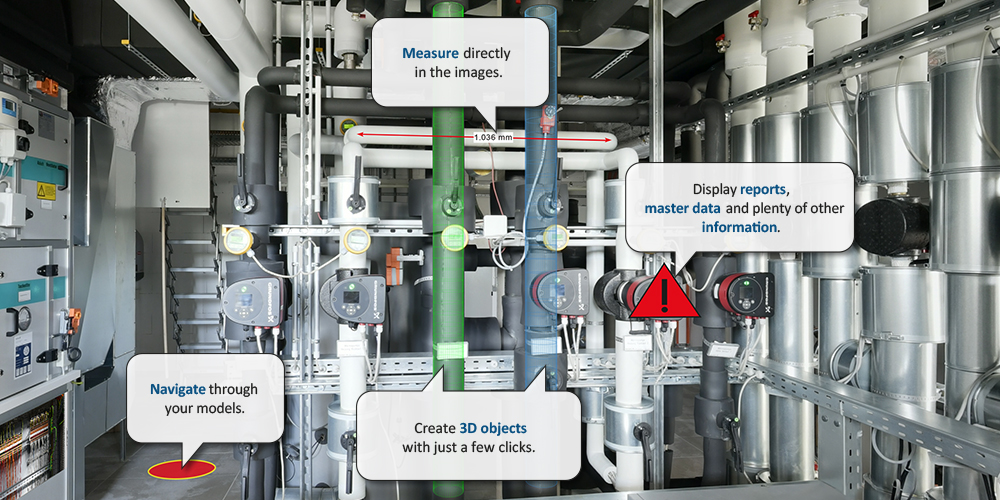In recent years, and especially these days due to Corona, companies face the growing need to take care of home office and remote work topics. On one hand, companies must be prepared for similar, future scenarios, on the other, employees wishing to have the opportunity to work in home office -at least part-time- will increase significantly after the latest quite positive experiences.
Due to the necessity to work from home, or to be in a place where it is currently impossible to get information about certain data/assets, other means and ways have to be found to make this information available. This is exactly where Digital Twins step in. Digital Twins must be defined beforehand in an application-specific way and need to be tailored to each company. Basically, a Digital Twin is the reflection of the physical ‘asset’ in the real environment (facility, technical installation etc.) and allows its simulation, control and refinement. Thus, it is more than a pure data package, but includes a model of the represented object or process. This model can therefore always be enriched with information or connected via additional services.
Well, if a digital twin is on everyone’s mind, and can offer so many advantages, why haven’t we got one of those digital twins of all the important assets yet?
It’s simply because of the costs involved. Up to now, creating such a twin has always been relatively complex and therefore expensive. Capturing data is either done manually by scale or with the help of special equipment like laser scanners. The resulting measurements or point clouds were then arduously modeled and rendered manually to create a detailed model. In this case, a balance had always to be found between the amount of work needed on one hand, and the level of detail on the other.However, a one-time capturing is unfortunately insufficient, as reality is constantly changing. This obligation for continuous capturing has made all approaches simply uneconomic so far. In addition to that, a pure model does not exactly reflect reality, but only shows just a model. Hence, it would be interesting to know what it looks like in reality, in order to be on the spot, so to speak.
This is where FRAMENCE technology comes in. With FRAMENCE, we have developed the first method to create such twins not only very fast but also cost-effective, above all. Standard photo panoramas serve as a basis, which can be easily captured by any employee or service provider using standard equipment. The panoramas are loaded into the FRAMENCE software and a 3D photorealistic digital twin is created fully automatically by means of mathematical methods, clever algorithms and artificial intelligence. This means that the necessary work for the twin is reduced to just “taking pictures” – the software takes care of the rest. All information is assigned graphically via “Points of Information”. Each documented area can be enriched with information/data.
To put it in a nutshell: You can monitor all that easily from your home office, or from wherever you are. The requested location is always just a click away.








